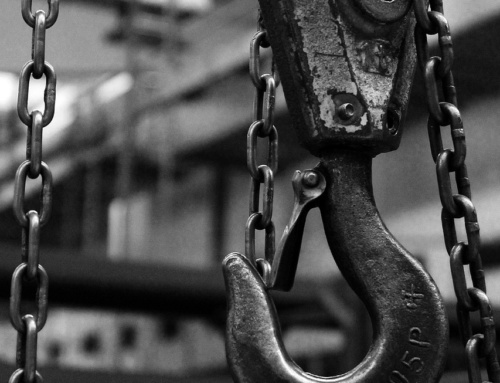There are no quick fixes, magic beans, or silver bullets to get the work out of your career pivot project. While everyone’s journey is different, there’s a common thread: you have to think, think deeply, be creative, be willing to explore, and ultimately, be ready to experiment before identifying the right “next” in your career. In other words, you need to do the heavy lifting required for a successful career pivot.
And even if you have a starting target in mind, there’s still the hard work of vetting it and uncovering the realities of your target. It turns out that running a hot dog stand is a lot different than the idea of running one.
Explore and Test Your Ideas Before Jumping
Plan on investing time in exploring your ideas and if they meet your basic filters (life priorities), spend even more time experimenting with the idea before making a final decision.
If your interviews with hot dog stand owners go well and you’re still excited about the business, it’s time to work for a couple of weeks in one. You’ll either discover the work of serving others fun food is exciting and energizing, or you’ll learn the twelve-hour (or more) days on your feet and the smell of grease from the fryer that never leaves you are unbearable.
It turns out that running a hot dog stand is a lot different than the idea of running one. Share on XNo Idea on What “Next” Might Be—Expect to Look Backward to Move Forward
Most people I encounter who talk about wanting to do something different never get started largely because they have no idea where to start. I’ve lost track of how many times I’ve heard, “I haven’t decided to be when I grow up.”
That’s wrong thinking.
Newsflash: you’re grown up, so the saying is ridiculous. And the accurate translation of that saying is, “I have no idea what I’m going to do, and I have no idea how to get started.” While vexing, this situation is easily solved (with some hard work) by first looking backward to help you tune in to you and then project forward.
Tuning In to You
It’s imperative to get help identifying your strengths or superpowers, as I call them. Ask others you’ve worked with and around over the past decade or two, “When we worked together, what was it you saw that I did well?” You might be shocked to hear what they have to say.
Next, spend time tuning in to your best-self moments in your life and career. What were those situations when you’ve been at your absolute best as a human and professional? What role did you play? What type of people were you around?
Now, spend time exploring your backstory. What through-lines extend from your history or your family’s history? How do these connect to you?
Those three exercises are fabulous for helping you tune in to you. Yet, even with the insights and data, it’s not always clear what this means for your future. Here comes the heavy lifting part again. Spend time with a trusted advisor—someone who cares about you and is willing to work with you to figure out your “next” and assess what the insights say about potential next roles or careers.
Introduce Divergent Thinking
While most of us naturally seek to converge on a solution (linear thinking), finding the right career pivot requires you to spend time in the uncomfortable space of divergent thinking.
I encourage my clients to go wild with ideas—no filtering or censoring—just thoughts. Build a Big Idea List (Your B.I.L.), and include everything you and your advisor can think of that might reasonably flow from your superpowers, backstory, and best-self ideas. Again, don’t censor yourself. The object is to develop as many out-of-the-box ideas as possible, along with some that you’ve long thought about in your daydreaming of a new career.
Clients who skip this close themselves off to discoveries and tend to opt-out of the hard work of career pivot and revert to finding a like-kind job, shutting down a tremendous growth opportunity because of the hard work. Don’t fall for this trap, and don’t turn lazy here.
Filter Your Ideas to Identify Top Candidates
The hardest part of the career pivot process is narrowing down your filters—those life priorities that must be present in any career change situation. This stage forces you to come to grips with the must-haves and the nice-to-haves and throw out most of the latter. However, once you’re armed with a clear list of must-haves, the work of filtering the ideas on your Big Idea List is much easier.
Now It’s Time to Explore and Experiment
Yep, more heavy lifting. Remember the hot dog stand example above? It’s time to pick one or two of your ideas that passed through your filters and learn more. Most people start with secondary research; however, the best insights come through talking with people in the prospective target idea. Get away from the keyboard and engage with people who can help you learn more about your idea.
If your research efforts still have you excited about the opportunity, it’s time to test the idea. While your style of testing will vary based on the idea, it might consist of moonlighting, taking some vacation time to try an idea on for size, investing weekend time, or going out on interviews. Be creative designing your experiments.
What if the Experiment Fails?
If your experiment fails, I advise you to celebrate. You dodged a situation that might have set you back financially or left you further away from your intended lifestyle and work circumstances. And, then after the celebration, go back to your Big Idea List and identify those that meet your filters and even consider adjusting your filters. Armed with one or two new ideas, it’s time to start the explore and experiment stages again.
The Bottom Line for Now:
If the above sounds like a lot of work, your perspective is spot on. If finding a new role or vocation is important to you, it’s some of the best work you’ll ever do. Skip the heavy lifting at your own risk.
![]()
—







Leave A Comment